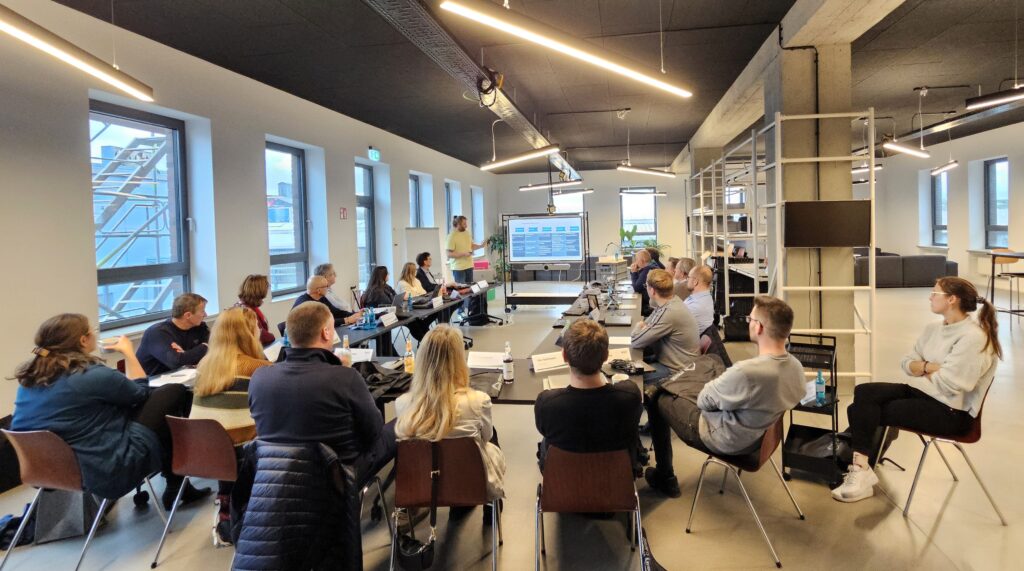In the workshop on January 29, 2025, 20 participants came together in our harbor room to learn more about the background and use of generative AI applications: It was about effective prompting with ChatGPT.
And how are things going when it comes to AI? Quite well when it comes to the use of generative AI applications. ChatGPT has taken off in the offices of our member companies. This workshop therefore met with great interest and was quickly fully booked.
Once again, the Zukunftszentrum KI NRW supported us with great expertise and right at the beginning: Many thanks to the team from the Zukunftszentrum KI NRW for this instructive and interesting afternoon!
Nils Bremhorst from the Zukunftszentrum KI NRW led the workshop and, after a brief round of introductions, first gave an introduction to the existing forms of machine learning (ML). ChatGPT as an example of so-called Large Language Models (LLM) calculates probabilities as to which words or sentences belong together and which word is most likely to follow another. This is done through intensive training with enormous amounts of text. This made it clear right from the start that ChatGPT does not perform any creative tasks on its own, but merely works out probabilities with an immense number of calculation processes. The more precisely the task description, i.e. the actual prompt, is formulated, the better the results.
We can give ChatGPT roles (“You are a social media agent of a marketing agency”) and, for example, the style in which the text should be written (“Formulate a social media post in the style of Goethe on the topic xyz”) – and the AI application provides us with a suitable text in no time at all, which can be further modified or optimized. This works better and better when reducing texts, converting them, summarizing them or developing new topics with brainstorming. AI-supported image generation and film generation are currently being driven forward.
Nils Bremhorst used many practical examples to show us how ChatGPT works and demonstrate its potential.
As always, there are one or more “buts” and these were also addressed and discussed.
First and foremost is the enormous energy consumption for ChatGPT prompts. Several studies came to the conclusion that a ChatGPT prompt consumes significantly more power to answer questions than a Google search and should not be considered in terms of sustainability. Use is limited in the free version; only the paid version offers more options and secure use in the company’s own protected space. Are all the sources that ChatGPT uses secure? What about data protection and the security of user data? Particularly in the development of new technologies, gray areas emerge that require caution, prudence and conscious and informed use.
The intensive look behind the scenes of ChatGPT, DeepSeek, DALL-E, Midjourney, Flux and what they are all called – or will soon be called – made the afternoon fly by.
The rapid development of AI applications makes it particularly important to learn and try things out in this area in order to be able to assess the potential for your own area of responsibility.
Nils Bremhorst gave us a clear explanation of how the models work and how we can use them. Next step: find out for yourself whether ChatGPT might provide even better examples when you say please and thank you or explicitly praise…
